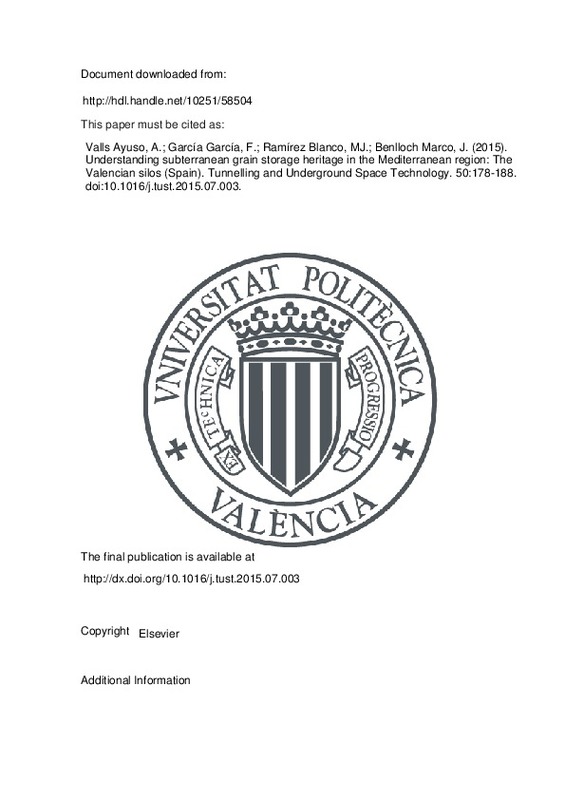JavaScript is disabled for your browser. Some features of this site may not work without it.
Buscar en RiuNet
Listar
Mi cuenta
Estadísticas
Ayuda RiuNet
Admin. UPV
Understanding subterranean grain storage heritage in the Mediterranean region: The Valencian silos (Spain)
Mostrar el registro completo del ítem
Valls Ayuso, A.; García García, F.; Ramírez Blanco, MJ.; Benlloch Marco, J. (2015). Understanding subterranean grain storage heritage in the Mediterranean region: The Valencian silos (Spain). Tunnelling and Underground Space Technology. 50:178-188. https://doi.org/10.1016/j.tust.2015.07.003
Por favor, use este identificador para citar o enlazar este ítem: http://hdl.handle.net/10251/58504
Ficheros en el ítem
Metadatos del ítem
| Título: | Understanding subterranean grain storage heritage in the Mediterranean region: The Valencian silos (Spain) | |
| Autor: | García García, Francisco | |
| Entidad UPV: |
|
|
| Fecha difusión: |
|
|
| Resumen: |
Underground space has widely been used through history, provided either by natural or by dug cavities that were used as storage for farming production. In particular, cereals has constantly been present in the Mediterranean ...[+]
|
|
| Palabras clave: |
|
|
| Derechos de uso: | Reserva de todos los derechos | |
| Fuente: |
|
|
| DOI: |
|
|
| Editorial: |
|
|
| Versión del editor: | http://dx.doi.org/10.1016/j.tust.2015.07.003 | |
| Código del Proyecto: |
|
|
| Agradecimientos: |
The authors would like to thank Valencia and Burjassot city councils for letting us carry out this research of the Valencian silos, as well as to the Historical Archive of Valencia for the attention and helpful suggestions. ...[+]
|
|
| Tipo: |
|







![[Cerrado]](/themes/UPV/images/candado.png)


